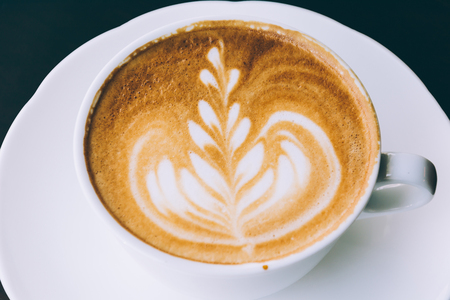1. The Rise of Japanese Coffee Culture
In recent years, American cafes—especially those in coffee-forward cities like Seattle—have been drawing inspiration from an unexpected source: Japan. While Italy and third-wave pioneers like Portland have long influenced the U.S. coffee scene, a new wave of appreciation is emerging for the meticulous, minimalist approach found in Tokyo’s coffee culture.
The Roots of Japanese Coffee Culture
Japans love affair with coffee dates back to the late 1800s, but it wasn’t until the post-WWII era that cafés known as “kissaten” became a cultural fixture. These traditional Japanese coffee shops offered more than just drinks—they were quiet sanctuaries where customers could slow down and savor each sip. Over time, this appreciation for calm, intentional experiences became a defining trait of Japanese coffee culture.
Precision Brewing: A Craft and a Ritual
At the heart of Japanese coffee lies a deep respect for technique. Brewing methods such as pour-over (often using the Hario V60), siphon brewing, and hand-drip techniques are performed with almost meditative focus. Every detail—from water temperature to grind size—is carefully controlled to achieve balance and clarity in every cup.
Popular Japanese Brewing Methods
| Method | Description | Why Its Unique |
|---|---|---|
| Hario V60 Pour-Over | A cone-shaped dripper that emphasizes clarity and brightness. | Allows full control over flow rate and brew time. |
| Siphon Brewing | Uses vapor pressure and vacuum suction to brew coffee in glass chambers. | Visually dramatic and highly precise. |
| Knel Drip | A slower hand-drip method often used in specialty cafes. | Focuses on deep flavor extraction over longer periods. |
Minimalist Design Meets Calm Ambience
The aesthetics of Japanese cafes play just as important a role as the coffee itself. Clean lines, natural wood elements, soft lighting, and uncluttered interiors create a space that encourages mindfulness. Unlike busy American coffee shops filled with laptops and noise, Japanese-inspired cafes prioritize tranquility over multitasking.
Key Elements of Japanese Cafe Aesthetics:
- Simplicity: Minimal decor keeps focus on the experience.
- Naturally Lit Spaces: Large windows and warm tones promote calmness.
- No Wi-Fi Policies: Some cafes discourage distractions to enhance presence.
- Ceramic Ware: Handmade cups elevate the sensory experience of drinking coffee.
A Global Reputation for Calm & Precision
This refined approach has not gone unnoticed abroad. Baristas and cafe owners across America are increasingly looking to Tokyo for inspiration—not just in brewing techniques but also in how to design spaces that foster connection, presence, and quality. From small batch roasters to stylish interiors, Japan’s influence is shaping the next chapter of American café culture.
As we explore this transpacific exchange further, its clear that what started as quiet innovation in Tokyo is now echoing across Seattle’s vibrant neighborhoods—and beyond.
2. From Kissaten to Craft Cafes
In Japan, the kissaten (喫茶店) has long been a cornerstone of coffee culture. These traditional Japanese coffee houses, which first appeared in the early 20th century, are known for their quiet ambiance, hand-brewed coffee, and attention to detail. Unlike fast-paced chain cafes, kissaten prioritize a slower, more reflective experience—something that’s now starting to resonate with American coffee drinkers.
As this mindful approach to coffee spreads westward, many American cafes—especially in cities like Seattle, Portland, and Los Angeles—are embracing key elements of kissaten culture. This includes everything from minimalist interior design to handcrafted brewing methods and curated music playlists designed to encourage lingering rather than rushing.
The Evolution: Kissaten vs. Modern Craft Cafes
| Feature | Traditional Kissaten (Japan) | Modern Craft Cafes (U.S.) |
|---|---|---|
| Atmosphere | Quiet, nostalgic, often dimly lit | Minimalist, calm, designed for conversation or solo work |
| Brewing Method | Hand-dripped pour-over, siphon brewing | Manual brew methods like V60, Chemex, siphon |
| Coffee Presentation | Served in porcelain cups with saucers | Often served in handmade ceramic mugs or sleek glassware |
| Menu Style | Focused menu with a few drinks and light meals | Simplified menus highlighting single-origin beans and seasonal offerings |
| Pace | Slow and deliberate; meant for unwinding | Encourages staying longer; no pressure to move quickly |
The Appeal to American Consumers
This shift toward intentionality in coffee culture comes at a time when more Americans are seeking quality over quantity. With growing interest in mindfulness and wellness, the kissaten-inspired cafe provides an environment where people can slow down and reconnect—with themselves or others—over a carefully prepared cup of coffee.
It’s not just about the drink itself; it’s about the ritual. Whether it’s watching a barista perform a precise pour-over or sitting at a quiet corner table surrounded by warm wooden tones and vinyl jazz records, these moments mirror the traditional Japanese approach while fitting seamlessly into modern American lifestyles.

3. Design Meets Ritual: The Aesthetics of Japanese Cafes
Walk into a Japanese coffee shop in Tokyo, and youre likely to notice more than just the aroma of freshly brewed beans. The entire space often feels calm, intentional, and thoughtfully designed. It’s not just about getting your caffeine fix—it’s about the experience. This sense of design as ritual is now making its way into American cafes, especially in cities like Seattle, where coffee culture is already deeply rooted.
The Beauty of Simplicity
Japanese cafes are known for their minimalist interiors. Rather than filling the space with loud colors or crowded furniture, these spots focus on clean lines and open layouts. Tables are spaced out to create a sense of privacy, and every piece of furniture serves a purpose without being flashy. This simplicity helps customers slow down and appreciate the moment—a stark contrast to the fast-paced vibe found in many traditional American coffee shops.
Key Design Elements
| Japanese Cafe Aesthetic | Description | How Its Adopted in U.S. Cafes |
|---|---|---|
| Clean Lines | Straightforward architecture with minimal ornamentation | Cafes in Seattle are using sleek wooden counters and uncluttered layouts |
| Natural Materials | Use of wood, stone, and neutral tones to create warmth | Coffee shops incorporate reclaimed wood tables and raw concrete floors |
| Mindful Ambiance | A quiet environment that encourages reflection and focus | Cafes are lowering background music volume and offering more personal seating areas |
Sensory Experience Beyond Taste
The Japanese approach to coffee isn’t just visual—it’s deeply sensory. From the sound of water slowly dripping through a siphon brewer to the texture of ceramic mugs, everything is crafted to engage more than just taste buds. American cafes inspired by this philosophy are starting to prioritize how their spaces feel and sound, not just how they look.
A Shift Toward Slow Coffee Culture
This aesthetic shift also signals a broader change in how people consume coffee. Instead of grabbing a cup to-go, more customers are choosing to sit down, disconnect from devices, and enjoy their drink in peace. By embracing Japanese design principles, American cafes aren’t just changing how they look—they’re changing how we connect with coffee itself.
4. Slow Coffee in a Fast World
In a country where speed and convenience often define the coffee experience, Japanese manual brewing methods like pour-over and siphon have carved out a unique space in the American café scene. These traditional techniques, which emphasize precision, patience, and presentation, are gaining popularity in cities like Seattle, where coffee culture runs deep.
The Allure of Manual Brewing
Pour-over and siphon brewing offer more than just a cup of coffee—they deliver an experience. Unlike automated machines or quick-service drip coffee, these methods require time and attention to detail. Customers watch as baristas carefully measure, bloom, and pour water in slow circles over freshly ground beans. The result is a cleaner, more nuanced flavor profile that many coffee lovers now seek out.
Comparing Coffee Styles: Japan vs. U.S.
| Aspect | Japanese Manual Brewing | Traditional American Coffee |
|---|---|---|
| Brewing Method | Pour-over, Siphon | Drip Machine, Espresso-based |
| Preparation Time | 5–10 minutes | 1–3 minutes |
| Customer Experience | Interactive, Meditative | Fast, Efficient |
| Flavor Profile | Crisp, Layered, Complex | Bold, Strong, Straightforward |
A Shift in Consumer Habits
This growing interest in slow coffee reflects broader changes in consumer behavior. Many Americans are rethinking their relationship with food and drink, prioritizing quality over speed. Younger generations especially are drawn to experiences that feel authentic and intentional. For them, watching a siphon brew bubble like a science experiment or sipping a meticulously prepared pour-over feels more satisfying than grabbing a to-go cup at a drive-thru.
A Cultural Blend Taking Root
As more cafés across the U.S. adopt these Japanese-inspired techniques, they’re not just serving better coffee—they’re reshaping what a coffee break means. It’s no longer just about caffeine; it’s about taking a moment to slow down, connect with craft, and appreciate the little details. In our fast-paced world, that small shift speaks volumes.
5. Seattle’s Embrace of Eastern Influence
Seattle, often seen as the heart of Americas third-wave coffee movement, has warmly welcomed Japanese coffee aesthetics into its local café scene. This cultural exchange is more than just an appreciation of minimalism or precision brewing — its a blend of values, design, and customer experience that bridges two passionate coffee cultures.
Japanese-Inspired Cafés in Seattle
Several cafés in Seattle have embraced Japanese influences in both their brewing techniques and interior designs. These cafés aim to replicate the calm, intentional atmosphere found in Tokyo’s kissaten (traditional Japanese coffee shops), while also catering to the tastes and expectations of American customers.
| Café Name | Japanese Elements | Location |
|---|---|---|
| Kōhī Kan | Siphon brewing, minimalist wood interiors, slow bar service | Capitol Hill, Seattle |
| Kurasu Coffee Pop-up | Pourover focus using Hario V60s, Kyoto-style cold brew | Downtown Seattle |
| Bun Coffee & Tea | Macha lattes, handcrafted ceramic cups, Zen-inspired layout | Bellevue (Greater Seattle Area) |
The Aesthetic Blend: East Meets West
The merging of Japanese aesthetics with Pacific Northwest culture creates a unique café experience. Many of these establishments feature:
- Simplified Menus: Emphasis on quality over quantity, showcasing single-origin beans and traditional Japanese drinks like matcha or hojicha.
- Naturally Lit Spaces: Large windows and open spaces inspired by Japanese architecture to create a calm atmosphere.
- Sustainable Practices: Echoing Japan’s efficiency-focused approach with reusable materials and eco-conscious sourcing.
Beyond Seattle: National Examples
The influence isn’t limited to Seattle alone. Cities like Los Angeles and New York have also seen a rise in Japanese-inspired cafés:
- L.A.s Maru Coffee: Known for its clean interior design and precise pourovers that reflect Tokyos specialty coffee culture.
- Ninth Street Espresso (NYC): Offers Kyoto-style cold brews and minimalistic branding influenced by Japanese design principles.
- Tsubaki Coffee (Portland): Combines local Oregon roasts with Japanese brewing tools like Kalita Wave drippers and syphons.
Cultural Connection Through Coffee
This integration goes beyond aesthetic—it reflects a shared philosophy. Both American third-wave cafes and traditional Japanese kissaten value craftsmanship, attention to detail, and creating a space where people can slow down. Through this blend of cultures, customers get more than just a cup of coffee—they experience an intentional moment of calm amid their busy day.
6. What’s Brewing Next: The Future of Cross-Cultural Coffee
As Japanese coffee aesthetics continue to gain traction in the U.S., its becoming clear that this cross-cultural exchange is more than just a passing trend. From minimalist design to intentional brewing methods, the influence from Tokyos coffee scene is shaping how Americans experience their daily cup of joe. So, what might we see next? Lets take a look at some potential directions where Japanese-inspired coffee culture could go in the American market.
Design Trends: Less Is More
Expect to see more cafés adopting clean lines, natural materials, and muted color palettes—hallmarks of Japanese interior design. These elements create calm, clutter-free environments where customers can unwind or focus. The “slow café” concept, where the space encourages mindfulness and relaxation, may become more common in major cities like Seattle, Portland, and Los Angeles.
| Japanese Design Element | How Its Showing Up in U.S. Cafes |
|---|---|
| Minimalist Decor | Simplified interiors with neutral tones and functional furniture |
| Natural Materials | Use of wood, stone, and plants for a calming atmosphere |
| Open Space Layouts | Layouts that encourage quiet conversation or solo work |
The Customer Experience: Thoughtful and Personalized
Inspired by Japans hospitality-driven service style known as “omotenashi,” more American cafés are focusing on creating meaningful customer interactions. This might mean baristas taking extra time to explain the origin of beans or offering small rituals like warm hand towels before serving coffee. Its about making each visit feel special without being overly formal.
Examples of Omotenashi-Inspired Service:
- Customizing drinks based on customer preference rather than just menu options
- Offering hand-brewed pour overs with detailed explanations
- Creating intimate seating areas for solo guests or quiet conversations
Sustainability Practices: A Shared Priority
Both Japan and the U.S. are increasingly aware of sustainability in coffee production and consumption. Expect American cafés influenced by Japanese culture to double down on eco-conscious practices—from reusable drinkware programs to sourcing beans from sustainable farms.
| Sustainable Practice | Description |
|---|---|
| Ceramic Cups & Dine-In Incentives | Encouraging customers to stay and enjoy coffee in-house using reusable cups |
| Local Sourcing & Seasonal Menus | Reducing carbon footprint by adapting menus based on local availability |
| Waste Reduction Techniques | Composting coffee grounds and minimizing packaging waste |
A Look Ahead: What Could Be Next?
The future might bring even deeper integration between Japanese craftsmanship and American innovation. Think smart tech paired with traditional pour-over methods or collaborative pop-ups featuring roasters from both countries. As cultural appreciation grows, so does the opportunity to blend the best of both worlds—Tokyo’s precision with Seattle’s creativity.


